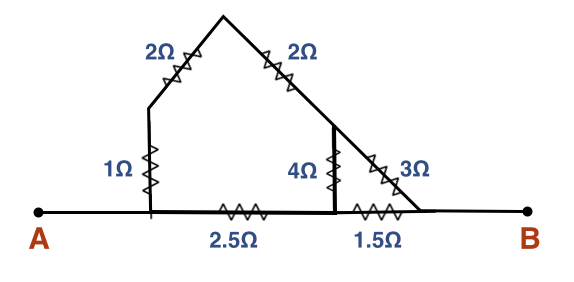Welcome To The House Of The Resistor

Find the resistance (in ohms) between point and .
The answer is 2.67.
This section requires Javascript.
You are seeing this because something didn't load right. We suggest you, (a) try
refreshing the page, (b) enabling javascript if it is disabled on your browser and,
finally, (c)
loading the
non-javascript version of this page
. We're sorry about the hassle.

The three resistors that form the top of the house are in series, so the sum of those resistors (1 + 2 + 2 = 5) gives the equivalent resistance for that section of the circuit. Now our circuit looks something like this:
Fortunately, the top two resistances are in the same ratio (5/3 = 1.667) as the bottom two resistances (2.5/1.5 = 1.667), so no current flows through a bridge in this configuration. In fact, we can treat it as though it wasn't here.
The resistances in the top are in series and they sum to 8 while the resistances in the bottom sum to 4. These two resistances are in parallel, so we use the relationship R t o t a l 1 = R 1 1 + R 2 1 to find the equivalent resistance between A and B:
R t o t a l 1 = 8 1 + 4 1 ⟶ R t o t a l 1 = 8 3 ⟶ R t o t a l = 3 8